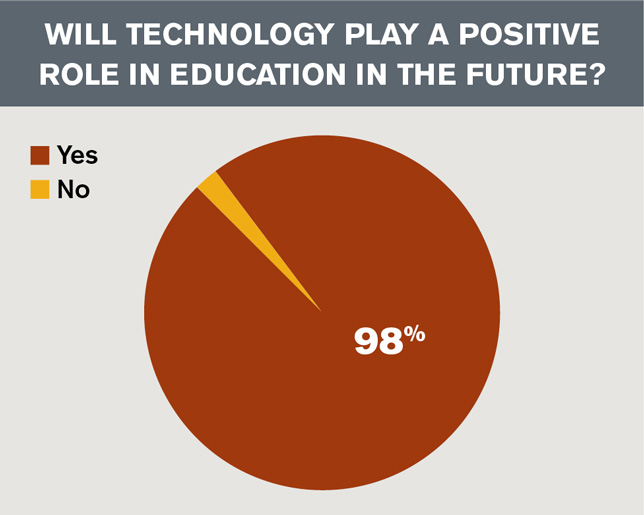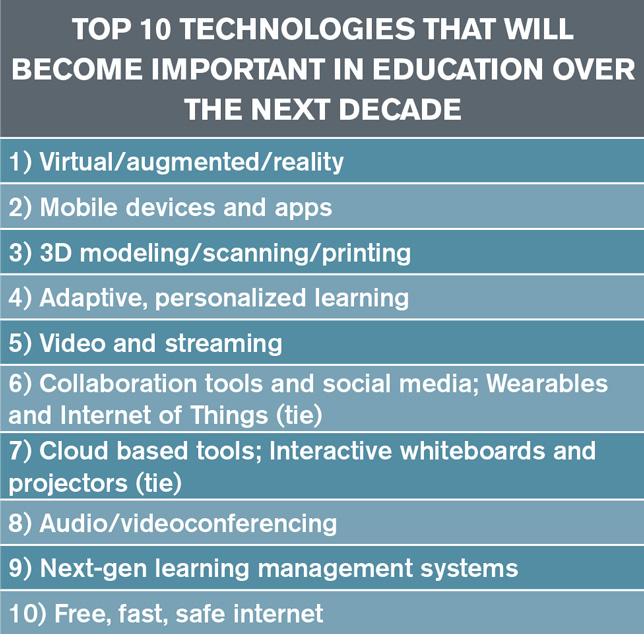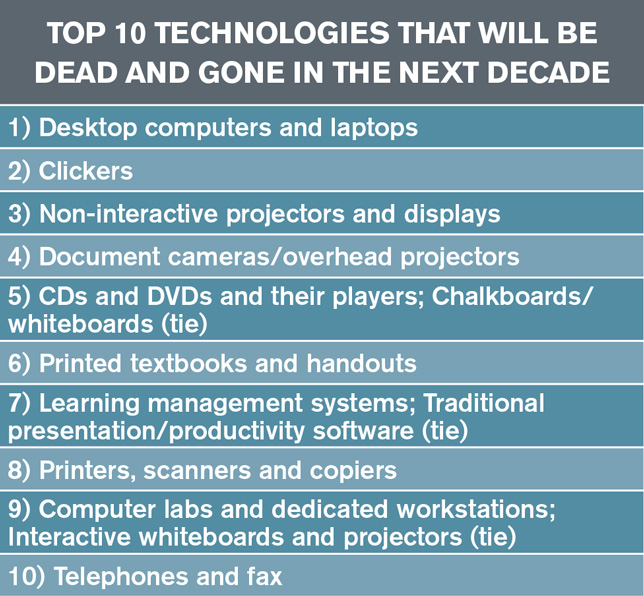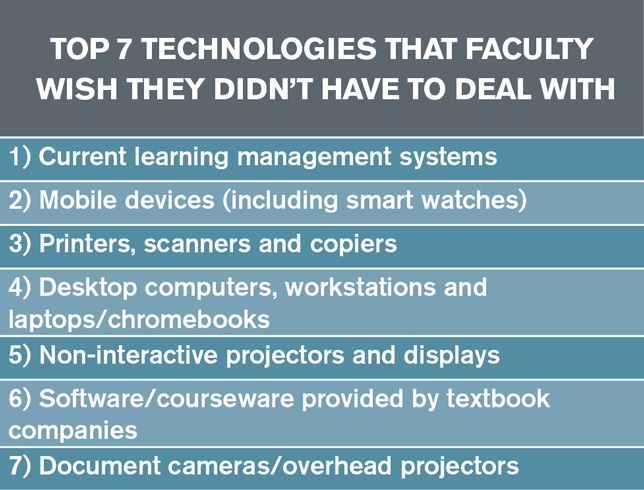Teachers not principals
Why Shouldn’t Teachers Become Principals?
++++++++++
more on ed leadership in this iMS blog
https://blog.stcloudstate.edu/ims?s=ed+leadership
Digital Literacy for St. Cloud State University
++++++++++
more on ed leadership in this iMS blog
https://blog.stcloudstate.edu/ims?s=ed+leadership
universal design for learning. 80 percent of the people who use captions are NOT deaf or hard of hearing
https://www.linkedin.com/feed/update/urn:li:activity:6458028833198137345
https://www.facebook.com/business/news/updated-features-for-video-ads
++++++++++
more on Universal Design in this IMS blog
https://blog.stcloudstate.edu/ims?s=universal+design
Learning to use the equipment and produce content helps students view the media they consume through a more critical lens
In a world of digital consumption, teaching students how to create what they see, hear and watch is like teaching them the secrets behind a magic trick. Students often spend hours weekly on digital devices, reading stories or looking at images, GIFs and video. They consume vast amounts of digital media without often understanding how it’s created.
Bradley has been teaching the video production class since 2005 as its regional occupational program (ROP) instructor for the Graphic Communications, Video Production, and Computer Animation and Modeling courses. Besides helping students develop technical skills, he also infuses his classes with classic film screenings. Students might come to class and watch “Fantasia,” “High Noon,” “Metropolis” and “Dr. Strangelove,” he says.
He also assigns students work that has a specific focus in mind and brings in local experts to help them learn more about a subject before they create.
++++++++++++
more on digital literacy in this IMS blog
https://blog.stcloudstate.edu/ims?s=digital+literacy
ID2ID webinar (my notes on the bottom)
Digital Fluency: Preparing Learners for 21st Century Digital Citizenship
Eighty-five percent of the jobs available in 2030 do not yet exist. How does higher education prepare our learners for careers that don’t yet exist? One opportunity is to provide our students with opportunities to grow their skills in creative problem solving, critical thinking, resiliency, novel thinking, social intelligence, and excellent communication skills. Instructional designers and faculty can leverage the framework of digital fluency to create opportunities for learners to practice and hone the skills that will prepare them to be 21st-century digital citizens. In this session, join a discussion about several fluencies that comprise the overarching framework for digital fluency and help to define some of your own.
Please click this URL to join. https://arizona.zoom.us/j/222969448
Dr. Jennifer Sparrow, Senior Director for Teaching and Learning with Technology and Affiliate Assistant Professor of Learning, Design, and Technology at Penn State. The webinar will take place on Friday, November 9th at 11am EST/4pm UTC (login details below)
https://arizona.hosted.panopto.com/Panopto/Pages/Viewer.aspx?id=e15266ee-7368-4378-b63c-a99301274877
My notes:
Jennifer does NOT see phone use for learning as an usage to obstruct. Similarly as with the calculator some 30-40 years ago, it was frowned upon, so now is technology. To this notion, added the fast-changing job market: new jobs created, old disappearing (https://www.nbcnews.com/news/us-news/students-are-being-prepared-jobs-no-longer-exist-here-s-n865096)
how DF is different from DLiteracy? enable students define how new knowledge can be created through technology. Not only read and write, but create poems, stories, if analogous w learning a language. slide 4 in https://www.slideshare.net/aidemoreto/vr-library
communication fluency. be able to choose the correct media. curiosity/failure fluency; creation fluency (makerspace: create without soldering, programming, 3Dprinting. PLA filament-corn-based plastic; Makers-in-residence)
immersive fluency: video 360, VR and AR. enable student to create new knowledge through environments beyond reality. Immersive Experiences Lab (IMEX). Design: physical vs virtual spaces.
Data fluency: b.book. how to create my own textbook
rubrics and sample projects to assess digital fluency.
What is Instructional Design 2.0 or 3.0? deep knowledge and understanding of faculty development. second, once faculty understands the new technology, how does this translate into rework of curriculum? third, the research piece; how to improve to be ready for the next cycle. a partnership between ID and faculty.
LITA discussions on vendors for VR in academia
At WMU, the Libraries is partnering with our central OIT to host a VR lab in the main library. My partnering co-director, Kevin, is really the subject matter expert but I’m managing a lot of the day-to-day operations. Kevin is programming and experimenting with all kinds of hardware but we decided to use Oculus Rifts in our lab primarily because of the greater durability of the hand controllers (compared especially to the Vive). We’re getting all of our games through the Oculus store and have plans to expand into Steam or another provider but haven’t done so yet. We currently have 40+ titles available for gaming and educational purposes. We also teach content creation using Unity, Maya, Blender, and a handful of other tools.
https://wmich.edu/vr and https://wmich.edu/library/services/vr
Happy to provide more information but hopefully this gives you a good start.
Best wishes,
Scooter
Scott Russell, Director of IT Services
University Libraries, Western Michigan University
+++++++++++++
more on VR in this IMS blog
https://blog.stcloudstate.edu/ims?s=virtual+reality
Library of Congress launched the National Screening Room. The National Screening Room currently offers about 300 videos. The videos are digital copies of films made in the 19th and 20th centuries. You can browse the collection by date, location of the filming, and subject. You can also search for videos that are parts of other LOC collections. All of the videos in the National Screening Room can be viewed online and or downloaded as MP4 files.
Flickr is known for hosting millions of images, but it also hosts lots of videos. how to find public domain videos on Flickr
Pixabay has been one of my go-to sites for public domain images for years. Pixabay also offers public domain video clips that you can download for free.
The Public Domain Review is a website that features collections of images, books, essays, audio recordings, and films that are in the public domain
+++++++++++
more on free images in this IMS blog
https://blog.stcloudstate.edu/ims?s=stock
+++++++++
more on gamification in this IMS blog
https://blog.stcloudstate.edu/ims?s=gamification
Punishing the bullies doesn’t really help, researchers say. But what does work?
Column by JILL BARSHAY https://hechingerreport.org/research-evidence-on-bullying-prevention-at-odds-with-what-schools-are-doing/
“Trump effect” on bullying in schools, citing a study that found higher bullying rates in GOP districts after the 2016 presidential election.
The scientific evidence on what works is complicated.
For example, this 2007 review of anti-bullying programs found “little discernible effect on youth participants.”
twenty-some years of empirical research that shows punishing kids is unhelpful
Instead, he argues that schools should combine consequences for bullies with mediation, counseling or a learning experience.
School shootings and violence have prompted schools to take an even more punitive stance against student misbehavior, experts I talked to said.
the higher a school’s climate rating — that is, the more that students, parents and teachers think their school is a safe place where people are respected — the lower the bullying rates. Similarly, the higher the social-emotional skills, such as the ability to wait and not react impulsively, the lower the bullying rates. But what hasn’t been clearly proven is that improvements in school climate or social-emotional skills will necessarily lead to a reduction in bullying.
+++++++++
more on bullying in this IMS blog
https://blog.stcloudstate.edu/ims?s=bully
Between the creation of a social rating system and street cameras with facial recognition capabilities, technology reports coming out of China have raised serious concerns for privacy advocates. These concerns are only heightened as Chinese investors turn their attention to the United States education technology space acquiring companies with millions of public school users.
A particularly notable deal this year centers on Edmodo, a cross between a social networking platform and a learning management system for schools that boasts having upwards of 90 million users. Net Dragon, a Chinese gaming company that is building a significant education division, bought Edmodo for a combination of cash and equity valued at $137.5 million earlier this month.
Edmodo began shifting to an advertising model last year, after years of struggling to generate revenue. This has left critics wondering why the Chinese firm chose to acquire Edmodo at such a price, some have gone as far as to call the move a data grab.
as data becomes a tool that governments such as Russia and China could use to influence voting systems or induce citizens into espionage, more legislators are turning their attention to the acquisitions of early-stage technology startups.
NetDragon officials, however, say they have no interest in these types of activities. Their main goal in acquiring United States edtech companies lies in building profitability, says Pep So, NetDragon’s Director of Corporate Development.
In 2015, the firm acquired the education technology platform, Promethean, a company that creates interactive displays for schools. NetDragon executives say that the Edmodo acquisition rounds out their education product portfolio—meaning the company will have tools for supporting multiple aspects of learning including; preparation, instructional delivery, homework, assignment grading, communication with parents students and teachers and a content marketplace.
NetDragon’s monetization plan for Edmodo focuses on building out content that gets sold via its platform. Similar to tools like TeachersPayTeachers, So hopes to see users putting up content on the platform’s marketplace, some free and others for a fee (including some virtual reality content), so that the community can buy, sell and review available educational tools.
As far as data privacy is concerned, So notes that NetDragon is still learning what it can and cannot do. He noted that the company will comply with Children’s Online Privacy Protection Act (COPPA), a federal regulation created in order to protect the privacy of children online, but says that the rules and regulations surrounding the law are confusing for all actors involved.
Historically, Chinese companies have faced trust and branding issues when moving into the United States market, and the reverse is also true for U.S. companies seeking to expand overseas. Companies have also struggled to learn the rules, regulations and operational procedures in place in other countries.
++++++++++++
https://uk.finance.yahoo.com/news/pompeo-merkel-iran-huawei-agenda-110409835.html
++++++++++++
+++++++++++++
more on data privacy in this IMS blog:
https://blog.stcloudstate.edu/ims?s=data+privacy
Kelly, B. R., & 10/11/17. (n.d.). Faculty Predict Virtual/Augmented/Mixed Reality Will Be Key to Ed Tech in 10 Years -. Retrieved October 31, 2018, from https://campustechnology.com/articles/2017/10/11/faculty-predict-virtual-augmented-mixed-reality-will-be-key-to-ed-tech-in-10-years.aspx




Our survey polled 232 faculty members across the country about their use of technology in the classroom, their likes and dislikes, their predictions for the future and more. The majority of respondents (68 percent) come from public institutions, with 28 percent from private nonprofits and 4 percent working at for-profit schools. Seventy-two percent work at four-year colleges or universities; 26 percent are at community colleges (the remaining 2 percent designated their institutional level as “other”).
Respondents represent institutions of a range of sizes, with about one-third (32 percent) working in colleges or universities with 2,500 to 9,999 students. Just under half (45 percent) of respondents are from institutions with 10,000 students or more.
Our respondents are veterans of higher education: The largest group (47 percent) has more than 20 years of experience, with 81 percent logging at least 11 years in the field.
The top three most common school and college types among our respondents are education (22 percent), business/business administration (17 percent) and liberal arts (12 percent). But overall, respondents work in a wide range of disciplines, from engineering and medicine to humanities and fine arts. The top 10 states with the most survey respondents are New York, Texas, California, Florida, Georgia, Virginia, Illinois, Missouri, Pennsylvania and Massachusetts.